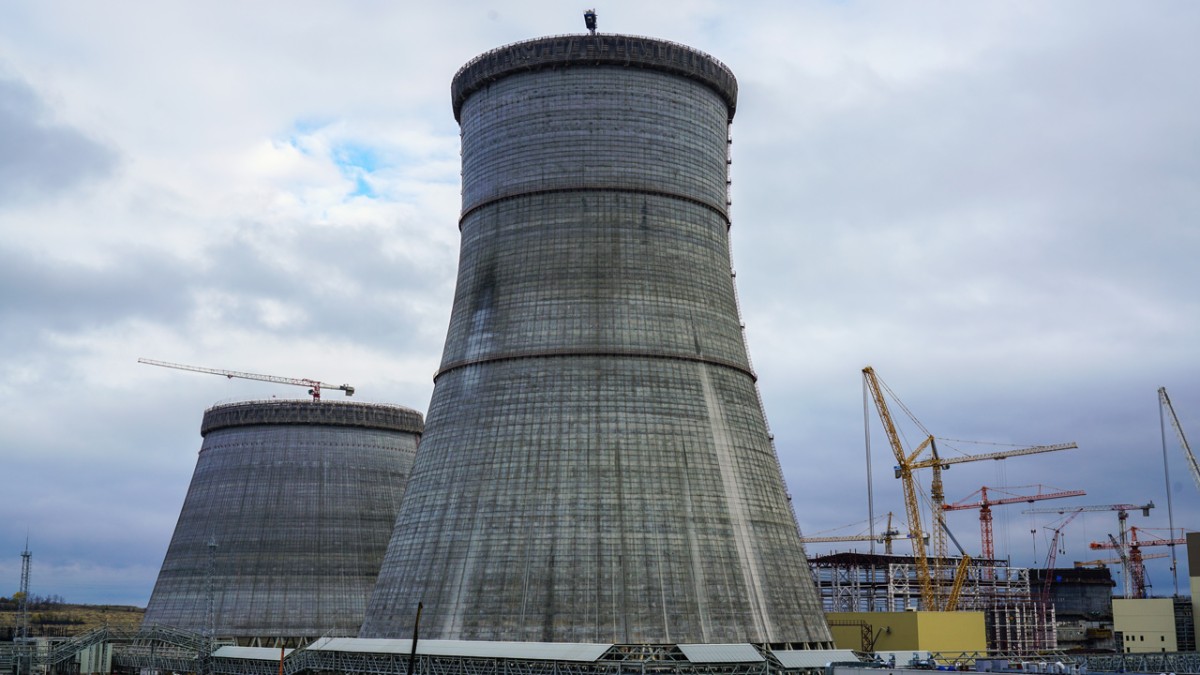 Construction of the evaporative cooling tower for unit 1 of Russia’s Kursk-II NPP has been completed, the plant has reported. The 179 metre structure is the tallest cooling tower in Russia. Previously this record was held by the cooling tower at unit 7 of the Novovoronezh NPP (171 metres).
Construction of the evaporative cooling tower for unit 1 of Russia’s Kursk-II NPP has been completed, the plant has reported. The 179 metre structure is the tallest cooling tower in Russia. Previously this record was held by the cooling tower at unit 7 of the Novovoronezh NPP (171 metres).
Kursk-II 1&2 are being built according to the VVER-TOI project (standard optimised informatised pressurised water power reactor), which is a development of the VVER-1200 reactor design with increased capacity and improved technical and economic indicators. Kursk II is being built near the village of Makarovka in the Kurchatov district of the Kursk region as a replacement station for the currently operating Kursk NPP, which comprises four RBMK reactors. The commissioning of unit 1 is scheduled for the end of 2025.
“The VVER-TOI project uses the experience of other operating cooling towers, as a result of which the heat removal capacity of the Kursk-II tower has been increased by about 22%,” said Andrey Osharin, First Deputy Director for Construction of New Units at the Kursk NPP. “To increase power, it is necessary to increase the height. The design of 179 metres will ensure the stable operation of the power unit without reducing energy production, even in the hottest summer period. The evaporative cooling tower is capable of cooling up to 160,000 cubic metres of water per hour.”
Construction of the tower took two years and 10 months. A special hydrophobic concrete was used for concreting the exhaust tower – it repels water and meets the required waterproofing standards. In total, about 14,000 cubic metres of concrete mix were used – this would be enough for the construction of three 16-storey two-entrance residential buildings. The work was carried out with the help of a unique crane capable of gradually increasing its height – up to a maximum of 200 metres.
“During the construction of the cooling tower, the specialists of SMU 1 LLC applied a number of innovative solutions that made it possible to speed up the concreting process without losing quality,” said Oleg Shperle, Vice President, Project Director for the construction of the Kursk NPP of JSC ASE. “So on the first three tiers, concreting was carried out using four grips, and on the next, only one. The builders of Kursk have already successfully transferred their experience to Indian partners who are building cooling towers at Rooppur NPP. Now that the concreting process has been completed, the challenge is to install the precast concrete inside the cooling tower under the water traps, as well as to the lift lines and supply lines. Completion of these works will mean that the cooling tower is ready for operation.”
Image: The newly-built cooling tower for unit 1 of Russia’s Kursk-II NPP (courtesy of Kursk NPP)






